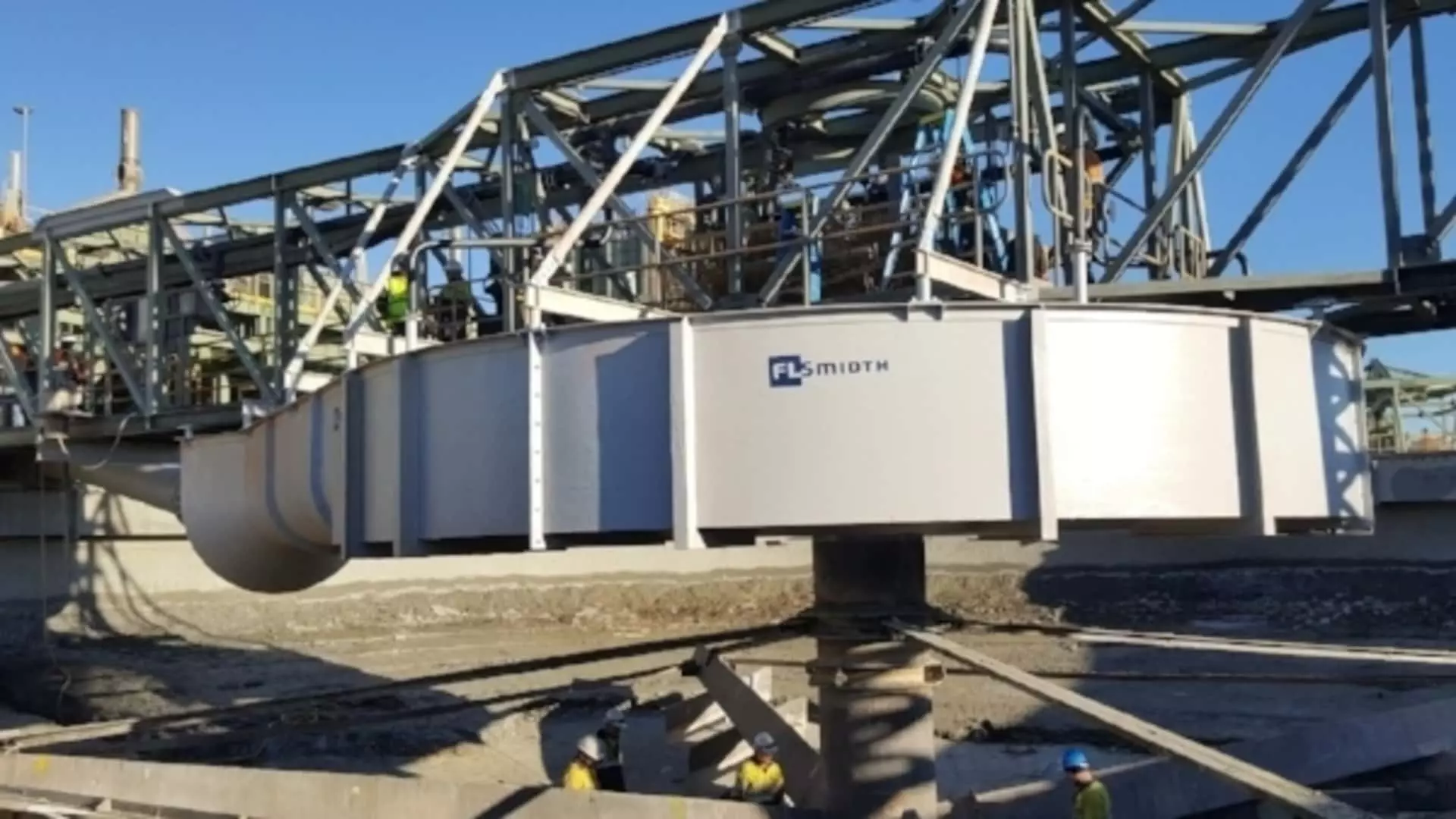Following test work, a process review and structural analysis of the bridge and thickener tank, the FLSmidth team recommended a combination of the E-DUC® feed dilution technology and the E-Volute™ feedwell. The E-DUC® system uses feed stream momentum to induce large volumes of feed dilution prior to the feedwell, thus optimising flocculation due to improved mixing profiles and residence times.
The E-Volute feedwell is characterised by excellent feed stream energy dissipation, optimal mixing energy and shear profiles. Subsequently, it promotes even feed distribution into the thickener with minimal floccule breakage, therefore improving the overall sedimentation performance.
Reduced installation time
Specialists at the FLSmidth Supercentre in Perth completed the project from on-site test work and inspection, to process and mechanical design, fabrication of all components, installation, and finally, commissioning. No other Original Equipment Manufacturer (OEM) has the ability to provide such a breadth and depth of service.

The results are convincing
Initial data analysis shows a reduction in flocculant dose of approximately 34 percent and an increase in underflow density by approximately 2 wt. percent during the first two months.
As the plant continues to optimise the new system under FLSmidth’s recommended control setup, flocculant savings are maintained and underflow densities have increased up to 8 percentage points from 48 wt. percent to 56 wt. percent (6 percent on average), limited only by the rake drive torque.
In addition to the achieved flocculant savings, the increase in leach feed density reduced total volumes reporting to the CIL, the minerals recovery process, by around 16.5 percent. Decreasing cyanide and lime requirements while significantly increasing available leach residence time, promoting gold recovery.
The results are such that the 34m leach feed thickener with FLSmidth technology is producing higher densities than the 44m tailings thickener with non-FLSmidth OEM technology.
Contact
Dane Smith, Technical Advisor, Dewatering